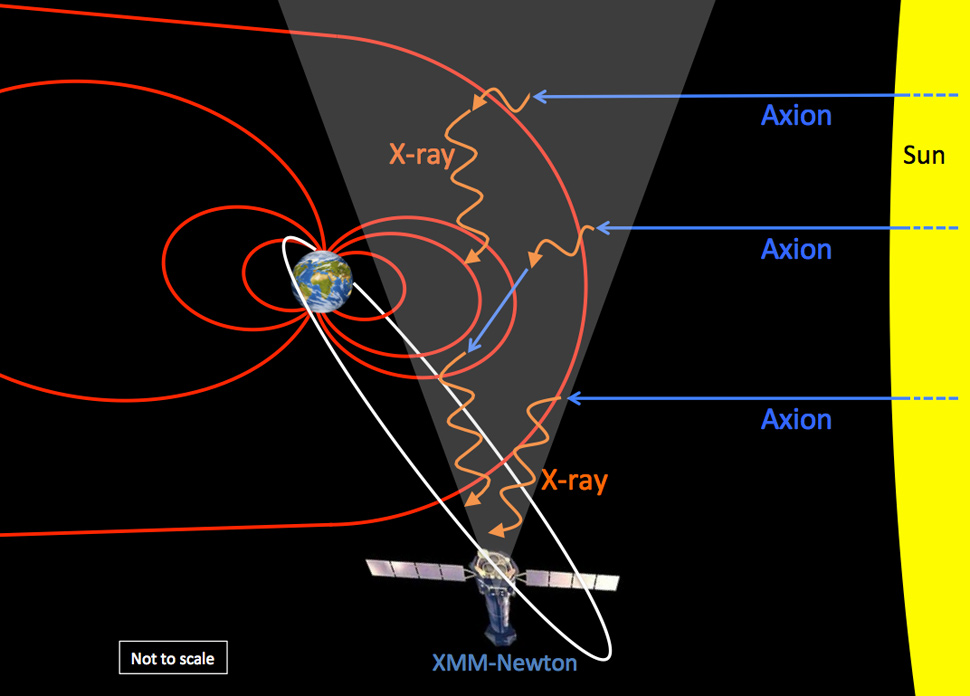Bonobo communication offers fascinating insights into the evolution of language, revealing that these remarkable primates utilize complex vocalizations similar to human speech. Recent studies indicate that bonobos, our closest genetic relatives alongside chimpanzees, exhibit a unique ability to use word compounds and phrasings to express intricate social situations. Such bonobo vocalization patterns suggest that the foundations of language may have predated human society by millions of years. This newfound understanding of animal communication not only enhances our comprehension of language evolution but also emphasizes the role of compositionality in animals, an essential aspect of creating meaningful interactions. With ongoing bonobo language studies uncovering the depths of their vocal repertoire, researchers are redefining how we perceive communication in the animal kingdom.
Exploring the intricate ways in which bonobos convey messages, researchers delve into the nuances of their vocal behaviors, shedding light on the interpersonal dynamics of these intelligent primates. Known for their social complexity, bonobos employ an impressive range of sounds to communicate various emotions and intentions, illuminating the links between social structure and vocal expression. This investigation into bonobo vocal communication highlights not only their unique language capabilities but also invites broader discussions about animal signals and the evolutionary trajectory of cooperative behaviors. As studies continue to reveal more about this fascinating species, the understanding of how humans and bonobos share communication traits becomes increasingly vital in the field of linguistics and animal behavior.
Understanding Bonobo Vocalization
Bonobos exhibit a rich tapestry of vocalizations that serve as a sophisticated means of communication within their social groups. Unlike many animals, bonobos utilize a variety of sounds, including peeps, yelps, and whistles, to convey specific messages to one another. This vocal complexity mirrors a critical aspect of human communication, where various sounds and tones create meaning. By studying these vocalizations, researchers gain insight into the ways bonobos express their feelings and coordinate social interactions, revealing the depth of their social structures.
Despite being non-verbal, bonobo vocalizations can signify complex social situations, much like how humans use language to communicate nuanced emotions and scenarios. For example, a bonobo might emit a subtle peep before a whistle to indicate tension among group members, showcasing their ability to communicate underlying social dynamics. This form of animal communication suggests that bonobos possess a level of compositionality – they can create meaning by combining different vocalizations in a way that distinguishes them from more rudimentary forms of animal interaction.
The Role of Compositionality in Animal Communication
Compositionality, the ability to combine simple signals to create more complex meanings, plays a significant role in the vocal communication of bonobos. In their study, researchers discovered that bonobos not only produce individual calls but also strings of vocalizations that convey deeper messages, akin to how humans formulate sentences. This crucial aspect indicates that bonobos might have a rudimentary form of language, as their calls can refer to actions, emotional states, or external events, demonstrating a foundational step toward linguistic expression.
The presence of compositionality in bonobo communication challenges the long-standing belief that complex language is a unique trait of humans. By analyzing different combinations of vocalizations, researchers were able to compile what they termed a ‘dictionary’ of bonobo calls, illustrating how these primates create meaning through structured vocal interactions. This revelation opens new avenues for understanding language evolution, suggesting that the roots of complex communication may extend back to our common ancestors with bonobos.
Investigating Bonobo Language Study
Recent research on bonobo communication has drawn significant attention, particularly in the context of language study. By observing bonobos in their natural habitat, scientists were able to meticulously catalog their vocalizations and analyze how these sounds contribute to social organization. This ongoing bonobo language study is crucial not only for understanding bonobo behavior but also for shedding light on the evolutionary pathways that have shaped the development of human language.
Through structured observations and rigorous data collection, researchers have been able to distinguish various vocalizations and their corresponding meanings. This systematic approach allows scientists to draw parallels between bonobo communication and human language, suggesting that both might share common characteristics. As these studies continue, they pave the way for a deeper understanding of how communication systems evolve, particularly in species that exhibit complex social interactions, such as bonobos and humans.
Implications of Bonobo Communication Research
The findings regarding bonobo communication have profound implications for our understanding of animal communication and its evolutionary significance. By illustrating that bonobos can express a range of meanings through vocal combinations, researchers challenge the notion that effective communication is reserved for humans alone. This study lends credence to the idea that the foundations of language may be far more ancient and widespread than previously thought, potentially reshaping discussions around language evolution.
Moreover, as researchers uncover more about bonobo vocalization patterns and their meanings, it enhances our appreciation for the cognitive capabilities of these primates. Understanding how bonobos use their vocal skills to foster social relationships can inform conservation efforts, as it highlights the complexity and richness of their social lives. These insights prompt a reevaluation of how we perceive communication in other animal species, urging a broader view of intelligence and social structure within the animal kingdom.
Exploring Language Evolution through Bonobos
Bonobos play a pivotal role in the exploration of language evolution due to their close genetic ties to humans. Research indicates that traits like compositionality in communication could have developed in our common ancestors, suggesting that the building blocks of language existed long before Homo sapiens rose to prominence. By studying the vocal behaviors of bonobos, scientists can glean valuable insights into the evolutionary processes that shaped the development of complex language.
The similarities in vocalization patterns between bonobos and early humans underline the importance of these primates in understanding our own linguistic heritage. The mechanisms through which bonobos articulate their social needs through sound could offer a glimpse into how early human communication systems might have functioned. This avenue of research provides a fascinating perspective not only on the history of language but also on the evolutionary pressures that may have influenced its complexity over time.
Bonobo Social Structures and Vocal Communication
The social structure of bonobos is intricately linked to their vocal communication, shaping how these primates interact with one another. Bonobos are known for their fluid social groups, often splitting and rejoining, which necessitates a robust communication system to maintain social cohesion. Their vocalizations serve as essential tools for coordinating movements and conveying emotions within these dynamic social contexts, highlighting the critical interplay between social organization and communication.
Researchers have noted that the complexity of bonobo social structures may require equally sophisticated communication, making their vocal interactions a rich field of study. The ability to signal intent, state emotions, or address specific situations through sound not only reinforces their social bonds but could also serve adaptive functions within their environment. Understanding these interrelations enhances our appreciation of how communication evolves in response to social needs across species.
The Intersection of Human and Bonobo Communication
The study of bonobo communication offers a unique lens through which to examine the complexities of human language. Given that bonobos share many cognitive and communicative traits with humans, investigating their vocalization patterns opens pathways for understanding how language may have evolved. These parallels bring attention to the fundamental elements of communication that transcend species barriers, allowing for a deeper exploration of what defines language.
By drawing connections between human and bonobo communication, researchers can uncover the underlying principles of language evolution. This comparative approach not only enhances our knowledge of bonobo behavior but also enriches our understanding of the cognitive processes that facilitate language development in humans. Understanding these intersections can provide a comprehensive picture of how communicative abilities have shaped social structures across primate species.
Measuring Communication Complexity in Bonobos
The measurement of communication complexity in bonobos is essential for understanding their social dynamics and cognitive abilities. Researchers utilize various methods to evaluate the intricacies of bonobo vocalizations, focusing on aspects like frequency, variation, and context. This measurement allows scientists to quantify the significance of different calls and their combinations, providing insights into how these vocalizations function as a cohesive system of communication.
The intricate analysis of bonobo communication patterns reveals not just the richness of their vocal repertoire but also the underlying cognitive mechanisms at play. As researchers continue to refine their methods for measuring communication complexity, they contribute to a more nuanced understanding of how vocal behaviors relate to social structures and evolutionary pressures. This knowledge has broader implications for the study of communication across the animal kingdom, particularly in species with advanced social systems.
Future Directions in Bonobo Communication Studies
The future of bonobo communication studies holds great potential for discovering further nuances in their vocal behaviors. Ongoing research is expected to enhance our understanding of how bonobos adapt their vocalizations in response to various social situations, which could lead to breakthroughs in how we perceive animal communication overall. As new technologies and methodologies emerge, researchers will be better equipped to analyze the complexities of bonobo vocalizations, perhaps even uncovering new patterns and meanings.
In addition to advancing our understanding of bonobo communication, these studies may also inform conservation strategies, emphasizing the importance of social structures in maintaining bonobo populations. By recognizing the role that vocal communication plays in their social interactions, conservationists can better advocate for the preservation of habitats where these complex animals thrive. Ultimately, the ongoing exploration of bonobo communication may continue to bridge gaps between animal and human language studies, revealing insights into the evolution of social complexity.
Frequently Asked Questions
How does bonobo communication compare to human language?
Bonobo communication exhibits remarkable similarities to human language, particularly in its use of compositionality. Recent studies show that bonobos can create complex vocalizations that resemble word compounds, indicating that the roots of language may predate human evolution.
What does the term ‘bonobo vocalization’ refer to?
Bonobo vocalization refers to the distinct sounds made by bonobos, such as peeps, yelps, and whistles, which they use to communicate a variety of social messages. Research has demonstrated that these vocalizations can convey specific meanings and can be combined in novel ways, similar to human language.
What can bonobo communication teach us about language evolution?
Bonobo communication offers insights into language evolution by revealing that the ability to use complex, combinatorial sounds is not exclusive to humans. This suggests that the precursors to language may have developed in shared ancestors, highlighting the evolutionary links between human and animal communication.
What is compositionality in bonobo language study?
Compositionality in the context of bonobo language study refers to the ability to combine simple vocal sounds into more complex meanings. This concept, fundamental to human language, has been observed in bonobos, indicating that they can construct nuanced messages through their vocalizations.
How do bonobos use vocalizations to express complex social situations?
Bonobos utilize a range of vocalizations to navigate their complex social structures. These sounds can signal various social contexts, such as alerts about predators or coordinating group movements, showcasing their sophisticated communication system, which is vital for maintaining social bonds.
What is the significance of the dictionary created from bonobo vocalizations?
The dictionary created from bonobo vocalizations is significant because it represents the first systematic attempt to decipher the meanings behind their calls. This breakthrough not only enhances our understanding of bonobo communication but also contributes to the broader field of animal communication research.
In what ways do bonobo vocalizations correlate to social complexity?
Research indicates a correlation between bonobo vocalizations and social complexity, as these animals display advanced communication skills in intricate social settings. The ability to use varied vocal sounds to convey different messages facilitates stronger social bonds and interactions among bonobo groups.
Can the study of bonobo communication influence our understanding of animal communication as a whole?
Yes, the study of bonobo communication can significantly influence our understanding of animal communication by highlighting the potential for sophisticated vocal behaviors in other species. It opens new avenues for research into how complex social structures may drive the development of communication systems across diverse animal groups.
| Key Point | Details |
|---|---|
| Vocal Communication | Bonobos use vocalizations similar to humans, indicating complex social communication. |
| Compositionality | Bonobos can combine sounds to create new meanings, reflecting the structure of human language. |
| Social Complexity | The complexity of bonobo communication correlates with their complex social structures. |
| Research Methodology | The team created a dictionary of bonobo vocalizations through extensive observation. |
| Significance of Findings | This research offers a new understanding of animal communication and the evolution of language. |
Summary
Bonobo communication has shown remarkable similarities to human language, indicating that these intelligent primates possess a sophisticated vocalization system. Through meticulous research, scientists have discovered that bonobos use a form of compositionality in their calls, enabling them to communicate complex social situations. This suggests that the roots of language may extend beyond humans, providing insights into the evolution of communication within social species.








